Projects of lighting fixtures for industrial enterprises
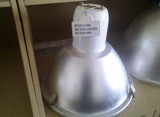 The design characteristics of the lighting fixtures, together with the light characteristics, have a decisive influence on the possible and feasible areas of their application.
The design characteristics of the lighting fixtures, together with the light characteristics, have a decisive influence on the possible and feasible areas of their application.
The design of lighting fixtures must meet such requirements as reliable protection of all parts of the lighting fixture from harmful environmental influences, electrical, fire and explosive safety, reliability, durability, stability of light characteristics under given environmental conditions, ease of installation and maintenance.
A classification of luminaires for protection against the effects of such basic environmental factors as dust and water is working today, which have a great impact on the reliability of luminaires, their safety for people and fire safety.
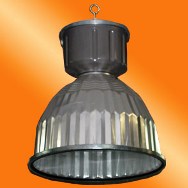
Choose designs lighting fixtures for fire and explosive areas must not only take into account the above degrees of protection against dust and water, but also depending on the class of the fire hazard premises according to ch. VII -4 PUE, and for explosive rooms - from the class of rooms for explosive danger according to ch. VII -3 PUE and categories and groups of explosive mixtures that can be formed in the premises. The specified PUE chapters provide the permissible degrees of protection of lighting fixtures for fire and explosion-hazardous premises of various classes.
Guidelines and recommendations according to the constructive choice of lighting fixtures depending on the environmental conditions, they do not fully cover all the factors that determine the feasibility or possibility of using a particular light fixture for specific conditions. Let's note some additional recommendations that it is advisable to take into account when choosing the design of lighting fixtures.
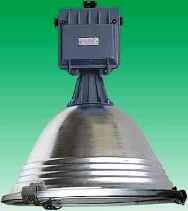 For rooms with a high content of dust, smoke, soot and with a chemically active environment, it is recommended to use lamps with such design schemes and made of materials that are least exposed to dust and dirt, for a better restoration of light characteristics after repeated cleaning and are more resistant to chemical influences.
For rooms with a high content of dust, smoke, soot and with a chemically active environment, it is recommended to use lamps with such design schemes and made of materials that are least exposed to dust and dirt, for a better restoration of light characteristics after repeated cleaning and are more resistant to chemical influences.
According to the specified characteristics, the lamps are arranged in the following order from the best to the worst:
1. According to the degree of dustiness with different design schemes:
a.with flat or convex glass and with a seal at the outlet of the lighting unit,
b. with a closed glass cover with a seal,
° C. without reflector,
e. the same, but with a reflector,
e. open with openings in the upper part for natural ventilation,
f. same without vents,
g. with a closed glass cover connected to the housing or reflector without a seal, or with a screening grid;
2. According to the degree of restoration of the technical characteristics of lighting, reflecting and transmitting light surfaces and materials after cleaning:
a. silicate enamel,
b. glass mirror,
° C. silicate glass,
e. aluminum alkalized or chemically brightened,
e. aluminized steel,
f. organic glass,
g. enamel (except silicate) and paint,
h. vacuum aluminized surfaces;
3. according to the degree of resistance to chemical influences:
a. porcelain,
b. silicate glass,
° C. plastics,
e. surfaces covered with silicate enamel,
e. organic glass,
f. aluminum,
g. steel
h. cast iron.
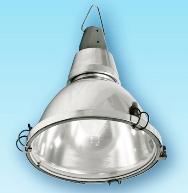
In some particularly dusty industrial premises, dust removal is used, in which all surfaces of the premises are sprinkled with water. In such rooms, the degree of protection must be at least IP55 or 5'5.
Luminaires of any degree of protection may be used in hot rooms, but luminaires with closed glass caps should be avoided, and amalgam lamps are recommended for fluorescent lamp luminaires.
In dusty rooms, the degree of protection of the luminaires is IP6X, 6'X or IP5X, 5'X, depending on the amount and nature of the dust, and for non-conductive dust, IP2X is allowed as an exception. It is not recommended to use lighting fixtures with 2X degree of protection in dusty rooms.
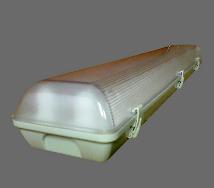
In rooms with increased danger and especially dangerous in connection with electric shock (see chapter 1-1 of PUE) when installing incandescent lamps and DRL at a height of less than 2.5 m and when supplying lamps with a voltage of more higher than 42 V, in order to increase electrical safety, the design of the lighting fixtures must not allow access to the lamps without the use of a special device or tool, such as a key, screwdriver, pliers, etc. This measure excludes the possibility of access to live parts of lamps installed at a low height by unqualified personnel and bystanders.
All fluorescent lamps produced by the industry have a design that excludes the possibility of touching live parts, which allows them to be installed at any height.
All fluorescent light fixtures have built-in capacitor ballasts to improve power factor. The use of lighting fixtures without such capacitors is prohibited.
For most types of lighting fixtures with DRL (DRI) lamps, independent ballasts are used, mounted separately from the lighting fixture.Only a few types of indoor lighting fixtures have built-in ballasts. The degree of protection of the independent ballasts from the influence of the environment must correspond to the environmental conditions of the premises.
